St. Lucia’s Cathedral Kotahena, Colombo, Sri Lanka is a Roman Catholic church and the first cathedral in Ceylon under the Archdiocese of Colombo in Sri Lanka. Situated at Kotahena to the northeast of Colombo, this magnificent edifice sprawls on 18,240 sq. feet of land, rises to a height of 150 feet, and can accommodate 6,000 devotees in its nave. Named after the martyr saint Lucy, St. Lucia’s Cathedral Kotahena is the oldest and largest parish cathedral in Sri Lanka and the seat of the Archbishop of Colombo. The present cathedral has been a spiritual oasis and a haven of rest for the Catholics in Kotahena, as well as the surrounding areas.
St. Lucia’s Cathedral Kotahena is dedicated to St. Lucia of Syracuse, also known as St. Lucy, as the patron saint of vision and the blind. Lucy, who had taken a vow of virginity, angered a man who had wished to marry her. He denounced her as a Christian to the Roman Emperor. Lucy was martyred after several attempts to make her give up her faith, including gouging out her eyes. Miraculously unable to move her or burn her, Paschasius ordered the guards to remove her eyes. Finally, her neck was pierced by a sword, and condemned to death in AD 304.
The legend concludes, however, with God restoring the Martyr’s eyes. Her eyes were miraculously restored to her body when her family set off to bury her—a gift from God, giving her the light of her eyesight back. Today, Saint Lucy is a source of hope for many who struggle with eye problems. Many stories have been handed down from generation to generation concerning St. Lucia. Following in the footsteps of her favorite saint, St. Agatha, she vowed to live a single life of blessedness, serving only God and the poor.
Kotahena has a mixture of several ethnic groups: Sinhalese, Tamils, Burghers, and Muslims, but religious harmony pervades here with caring and sharing among all communities and religions. St. Lucia’s Cathedral will remain as a testament to the resilient and faithful Catholic clergy and thousands of parishioners. St. Lucia’s Cathedral Kotahena is the legacy of our forefathers, whose fervent faith aspired to build this as a tribute to God. At the threshold of yet another century, this cathedral stands unsurpassed in beauty and magnificence, as it has always stood over the last one hundred years.
St. Lucia’s Cathedral, Kotahena, Colombo Contact number: 0112 432 080
St. Lucia’s Cathedral, Kotahena, Colombo Mass Schedule
Mass Timings: 6 AM, 7 AM and 6 PM from Monday to Friday & 5.30 AM (English), 7 AM (English), 8 AM (Sinhala), 9.15 AM (Tamil), 6 PM (English) on Sunday.
Related Post: St. Anthony’s Shrine Kochchikade, Colombo, Sri Lanka
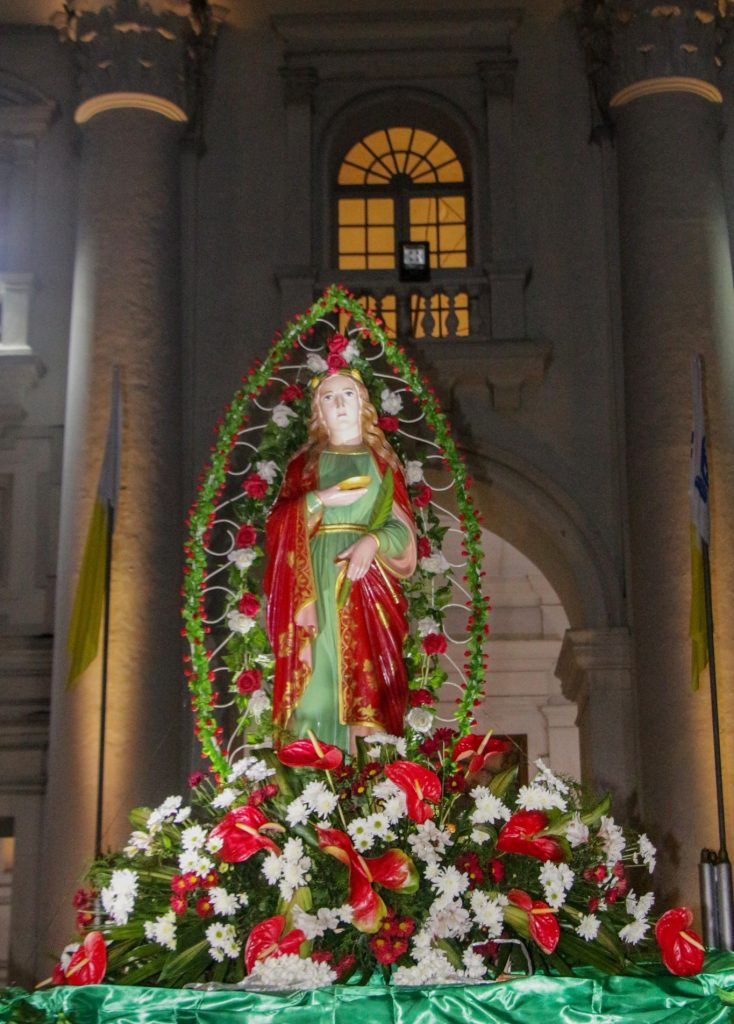
How is the name Kotahena derived?
Kotahena was first known as Kottan Chena, a chena of kottan (native almond) trees. Many opine its name is derived from the hundreds of Kottan trees that stood there, causing the village to be called ‘Kottanchena’. The Portuguese called the place Kotachena; the Dutch called it Kotanchena; and the British called it Cottan China and Kottanchina. In 1870, due to various criticisms and protests, it was called Kotahena. Kotahena has been a predominantly Catholic town for decades. This area, covering the Municipal Ward of Colombo 13, was once a quaint fishing hamlet in the 17th century.
History of St. Lucia Cathedral Kotahena
St. Lucia Cathedral traces its humble origins to a small chapel of wood and cadjan built by the pioneering clergy of the Oratorian Order in 1760, when Ceylon was under Dutch occupation. The Dutch government had granted 10 acres of land to the bishop. By 1779, the Catholics of Kotahena had selected this hill to be the centre of their religious worship. This small chapel was replaced by a larger church of brick and mortar in 1782. It was in this era that the Dutch also set about building their Reformed Church on the hill at Wolvendaal, which stands in Colombo 12. Wolfendahal, loosely translated, means ‘dale of wolves’ which shows how these parts of Colombo once had dense woods.
In 1796, the Dutch and British soldiers were encamped on either side of the Kelani River, and a gun battle was imminent. It is said that the citizens on the Colombo side had taken refuge on the hill where the church stood. In 1796, the Dutch and British soldiers were encamped on either side of the Kelani River, and a gun battle was imminent. It is said that the citizens on the Colombo side had taken refuge on the hill where the church stood. The British expelled the Dutch in 1796 and annexed the entire island to the British Empire in 1815.
When Ceylon was detached from the jurisdiction of the Archbishop of Goa in 1834, Rev. Fr. Vincente Rozairo, who came from Goa, was appointed the first Vicar-Apostolic of Ceylon in 1838, and St. Lucia’s Cathedral became the first cathedral of Sri Lanka. Eventually, the foundation stone for a new cathedral building was laid to replace the old one. In 1873, Bishop H. D. Sillani and Rev. Fr. S. Tabarrani, men of great vision and talent, designed and initiated the building of St. Lucia’s Cathedral, thus planting the seeds of grandeur and magnificence of what was to be.
The Catholics of Colombo, the churches outside the city, and even the fishermen contributed their share to the building fund. The cathedral cost Rs 160,000 to build, which was an enormous amount in the last century, yet it was totally funded by the pious generosity of the Ceylonese Catholics of the time. The first phase was completed in 1881. Towards the end of 1887, the main body of the cathedral was complete, and the blessing of the cathedral took place in December of that year. However, the building of the cathedral took 30 years and was completed in 1902, when the scaffolding was finally dismantled and the site cleared.
The succeeding generations of parishioners and parish priests continued to embellish the cathedral with exquisite statues, often shipped from Europe. After a succession of European priests, Rev. Fr. Nereus Fernando became the first Sri Lankan parish priest of the cathedral in 1956. Under the dynamic leadership of Rev. Fr. Rufus Benedict, the cathedral was prepared for its centenary, which was celebrated in December 1987.

St. Lucia Of Syracuse
St. Lucia: the saint who lost her eyes and found the light…
When you enter this holy cathedral, what catches your eye first is the statue of St. Lucy enshrined on the main alter, holding a dish with her eyes on the palm of her hands. The story of Blessed Saint Lucia dates back to the 3rd century, when she died during the persecution of the Roman Emperor Diocletian. Though historical details are hard to confirm, legends about Saint Lucy had been handed down. Let us delve into the history of this Queen of Lights.
Lucy, or Lucia, as she was called, was born in Syracuse, Sicily, around the year 283 to a rich, Christian noble family. When she was five years old, her father died, leaving the responsibility of bringing her up to her mother, Eutychia. From her very early years, Lucy consecrated herself to God without mentioning it to anyone, not even her mother. As a young woman, she had pledged her life to the church and was hoping to spread her dowry to the poor. Eutychia suffered from hemorrhages and feared for Lucy’s future.
A half century earlier, the holy virgin Saint Agatha had been martyred forty miles north of Syracuse in the city of Cantania. Saint Agatha was revered as the glory of Cantania. Her tomb became a popular place of pilgrimage and the site of many miracles. Hopeful of a cure for her mother’s hemorrhages, Lucy convinced her mother to make a pilgrimage to Saint Agatha’s tomb. Eutychia agreed. While at the tomb, the two fervently prayed for a long time.
As they did, Lucy had a dream-like vision in which Saint Agatha appeared to her, informing her that her mother would be cured because of Lucy’s faith and that Lucy would become the glory of Syracuse, just as Agatha was the glory of Cantania. When Lucy awoke from her vision, she cried out, “O, mother, mother, you are healed!” She followed in the footsteps of her favourite saint, St. Agatha. From that moment on, Lucy continued to sense Saint Agatha speaking to her about her calling to be a bride of Christ and to die as a martyr.
Lucy’s mother, however, went against her daughter’s wishes and plans. Not knowing the intentions of her daughter, Lucy’s mother, Eutychia, had arranged for her daughter’s marriage to a non-Christian nobleman from a pagan family. But Lucy stood her ground and resorted even more to a life of prayer and sacrifice, realizing that there was a much more powerful partner in life for her—Jesus Christ.
She informed her mother of her desire to remain a virgin and begged her to offer their wealth to the poor. Her mother hesitated, suggesting it would be better for Lucy to do so once Eutychia had died, but Lucy urged her to do so right away because it would be a source of much greater merit. She continued to postpone her marriage and spent the next few years joyfully distributing her money and jewels to the poor.
Around the year 304, when Lucy was around the age of twenty-one, her suitor became aware of the large sums of money that she had distributed to the poor, and his bride-to-be was already promised to the church. He was also aware that Lucy had done so on account of her Christian faith and realized that she was not going to become his bride. Enraged, he reported Lucy to Paschasius, the Governor of Syracuse, denouncing her as a Christian. When Governor Paschasius of Syracuse learned of Lucy’s Christian faith and her charity to the poor, he had her arrested and interrogated. He attempted to force her to apostatize by offering sacrifice to the Roman gods, but she refused.
Lucy then accused the governor of demon worship and prophesied his condemnation before God. The governor was outraged and ordered her to be defiled in a brothel. Legend says that when the guards came to take her away, they could not move her; she was heavier than a boulder. They even tried to move her with a rope tied to the yoke of the oxen, but she didn’t budge. The guards then surrounded her with wood to burn her, but the flames did not harm her. At this stage, an enraged Paschasius ordered her eyes to be gouged out. Lucy was killed by the sword, and God permitted her martyrdom to be completed in AD 304.
Paschasius ordered his soldiers to take the young girl to a nearby brothel and there defile her.
“You can try.” Lucia sat down on the ground.
The guards heaved.
The guards pushed.
The guards pulled.
Little Lucia could not be budged, making one think of “and all the king’s horses and all the king’s men,couldn’t get Humpty up again““I’ll burn you alive if you don’t sacrifice to the emperor,” Paschasius said.
“Do your best,” Lucia said calmly, adjusting her hair. Tapers were brought and held to the wood. Nothing happened. Oil was poured on the wood, more tapers were brought. Nothing happened. By now, Paschasius was jumping up and down in frustration. Lucia just smiled.
Saint Lucy is often depicted in sacred art holding her eyes because much later legends state that either the guards gouged her eyes out as torture or that she gouged her own eyes out so that her suitor would no longer be tempted by their beauty. When her body was taken to the family mausoleum, people were shocked to see her eyes restored. It was this encounter which drew attention to the departed Lucy. Since then, paintings depict her holding her eyes on a golden plate. Whatever the facts of the legends surrounding St. Lucy are, the truth is that her courage to stand up fearlessly and be counted a Christian in spite of torture and death, is the light that should lead us on our own journey through life.
Her name Lucy means ‘light’ and so she became the patron saint for the “Light of the eyes”. Today, this virgin and martyr is universally acclaimed as the saint of the blind, those afflicted with eye ailments and weak eyesight. Many stories have been handed down from generation to generation concerning St. Lucy. She vowed to live a single life of blessedness, serving only God and the poor.
Veneration to Saint Lucy quickly spread, and her prophetic dream-vision came true—she became the glory and protector of Syracuse and the source of many miracles. By the end of the sixth century, she was so revered throughout the Roman Empire that Pope Saint Gregory the Great inserted her name into the Roman Canon (Eucharistic Prayer I): “Graciously grant some share and fellowship with your holy Apostles and Martyrs: with John the Baptist, Stephen, Matthias, Barnabas, Ignatius, Alexander, Marcellinus, Peter, Felicity, Perpetua, Agatha, Lucy, Agnes, Cecilia, Anastasia and all your Saints…”
The fact that a young virgin martyr would become so revered and honored for many centuries after her birth is a testimony to the power of God. Saint Lucy not only imitated her Lord, but in her humility, she reflected the glory of the Mother of God, who, in her song of praise, proclaimed, “For he has looked upon his handmaid’s lowliness; behold, from now on will all ages call me blessed. The Mighty One has done great things for me, and holy is his name. (Luke 1:49–49).
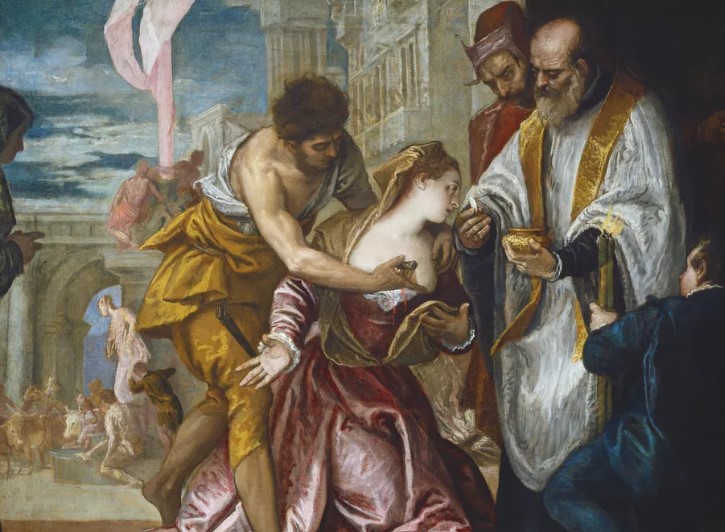
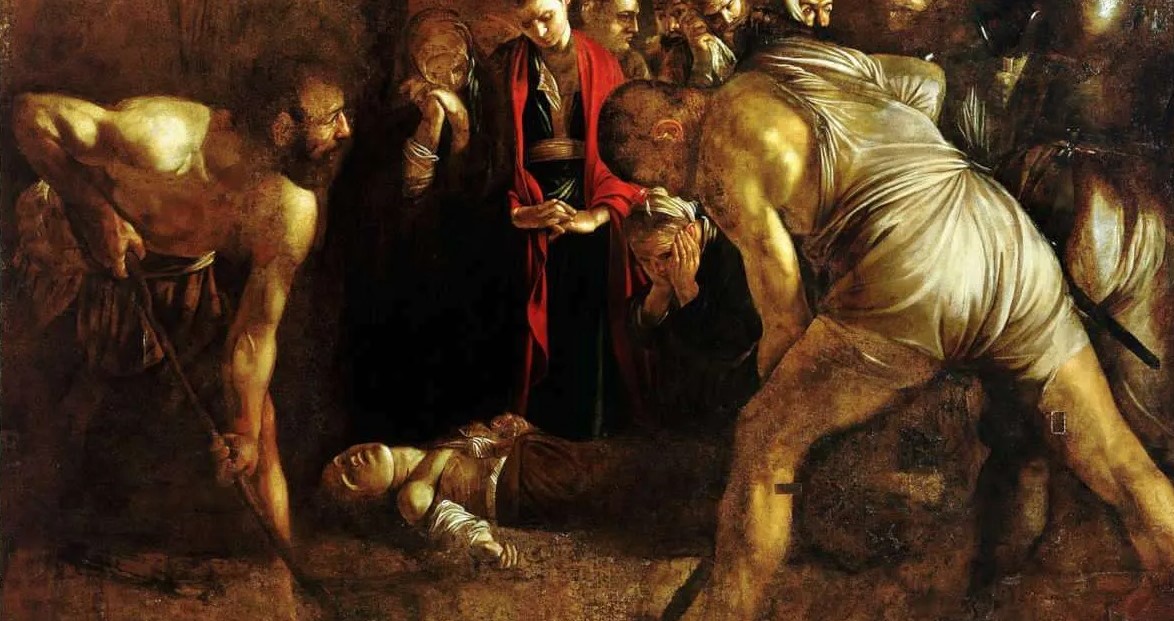
 Prayer to Saint Lucy
Prayer to Saint Lucy 
Saint Lucy, your beautiful name signifies light. By the light of faith which God bestowed upon you, increase and preserve this light in my soul so that I may avoid evil, be zealous in the performance of good works, and abhor nothing so much as the blindness and the darkness of evil and of sin.
By your intercession with God, obtain for me perfect vision for my bodily eyes and the grace to use them for God’s greater honour and glory and the salvation of all men.
Saint Lucy, virgin and martyr, hear my prayers and obtain my petitions.
Amen.
St. Lucia’s Cathedral Architecture
St. Lucia’s Cathedral is a massive structure built in distinct Gothic architecture. The facade of the church rests on massive ionic columns, and it’s adorned with seven statues. Silhouetted against the sky is the cross on the concrete lantern crowning the dome, the pinnacle of the cathedral. The interior consists of large statues of saints, beautiful wooden carvings, and intricate glass stained windows. Rising above the main altar is a statue of Saint Lucy holding up her eyes on the palm of her hand.
Its facade has four majestic pillars rising into the ceiling. On the topmost border,, there are statues of Blessed Mary, St. Lucia, St. Anthony, St. Peter, St. Paul, and St. Francis of Assisi. A clock with Roman numerals still indicates the time. The large dome was once subject to a crack when the Japanese bombed Ceylon in April 1942. The crack began to widen, and in 1957, it took a full year to repair it. The aisles are long and wide. On the massive columns that support the structure, there are many statues, among which the most popular are those of Saint Aloysius, Saint Francis Xavier, Saint Vincent de Paul, Saint Cecelia, and Saint John de La Salle. The main altar has a crucifix and the words INRI engraved at the top.
Along the side aisles are ornate, larger-than-life statues of saints, sculpted and painted in minute detail. Many of these statues were installed in 1924 by Rev. Fr. J. Milliner, who was a gifted artist. Open confessionals of intricately carved dark wood are also placed along the aisles. On the left, in front of the sanctuary, is a unique dark skinned statue of the Madonna called “Our Lady of Kotahena.” This statue is taken in procession during the “Month of May” celebrations. Altars of white marble are located in the transepts of the church, with relics enshrined within them. Surmounted on the main altar is a beautiful, larger-than life statue of St. Lucy holding up her eyes on the palm of her hand. The exquisite stained glass windows, when lit by sunlight, create a panorama of colour further enhancing the transepts of the church. In a far corner of the church is an enchanting Baptismal Font of white marble. It is circular in shape, carved with cherubs and a statue of John the Baptist crowns it.
Another important feature of the cathedral is its four bells. When you go up the narrow staircase that leads to the choir loft, you come upon “Anthony Thomas,” an enormous bell weighing 4300 lbs. Intricately engraved on this bell are elaborate floral wreaths and various holy figures and symbols of Christianity. It is the largest of the four bells shipped from Marseilles and christened at the cathedral in 1903. Over the decades,, these bells have pealed in jubilation and tolled in mourning. The second bell, “Henry Lucia Emilia,” weighs 2,000 pounds, and the third bell, “Francis Theresa,” weighs 1,400 pounds. Weighing 950 pounds, the small bell is christened Jean Baptist Edward Anna. The view of the cathedral from the choir loft is enthralling, and the episcopal throne of the Archbishop of Colombo stands out majestically.
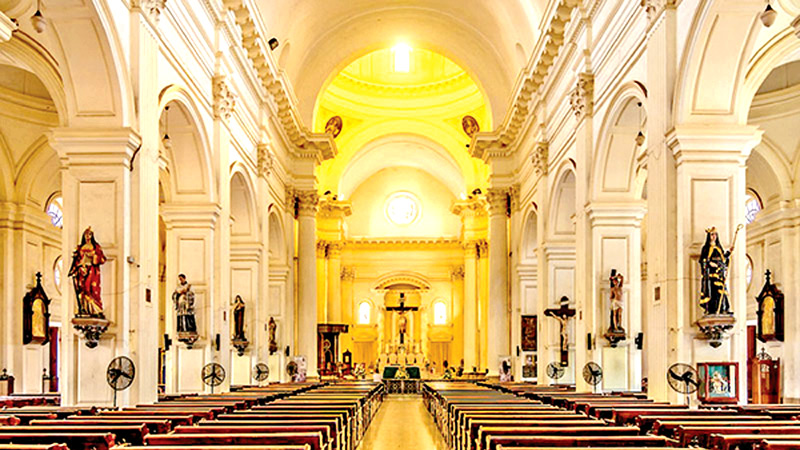
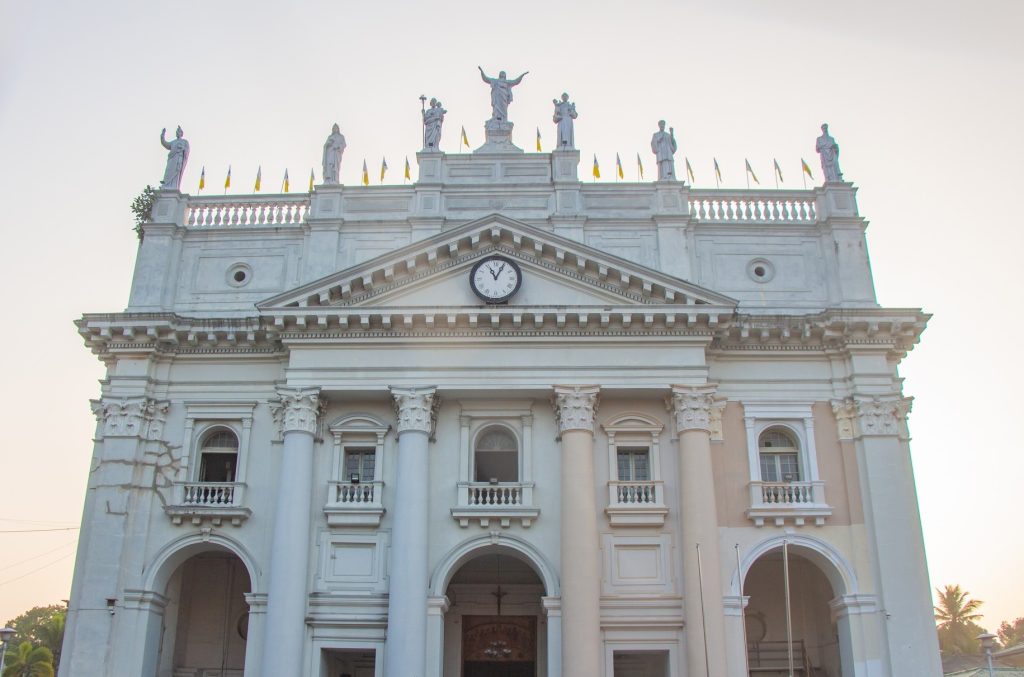
Birth of Catholic Schools in Sri Lanka
It was St. Lucia’s Cathedral that impacted the boys of St. Benedict’s College and the girls of Good Shepherd Convent.
St. Benedicts Institute was founded by Abbot Hilarion Sillani, OSB, in 1865. Today, St. Benedict’s College has grown into one of the finest Catholic boys’ schools on the island, with many of its students faithfully enrolling in the seminary and becoming the next generation of clergymen. The De La Salle Brothers came to Ceylon in 1867. These dedicated men influenced generations of Catholics, and the La Sallian brothers continue to perform a great service to the students of Sri Lanka.
Christian zeal gained momentum with the arrival of the Good Shepherd Order in 1869. These religious sisters were welcomed and loved by all in Kotahena, and they too continue to faithfully uphold the shining light of their spiritual witness. The sisters soon began the Good Shepherd Convent in May 1869, where thousands of girls have received a holistic education. St. Lucia’s College was built in 1918. It was from this cathedral that the much-loved Society of St. Vincent de Paul (SVP) was introduced to the Ceylonese in 1907. Today, SVP does tremendous service, manned by volunteers.
Feast of St. Lucia’s Cathedral Kotahena
St. Lucia’s Cathedral celebrates the feast of St. Lucy on December 13; in addition to “Corpus Christi” and the “Month of May” festival. The day of the celebration begins with a trilingual festive mass conducted by the bishop. On the eve of that day, the relevant statue is taken in procession around the streets of Kotahena, followed by school bands, around 60 flag bearers with the flags of different nations, and the various associations of the cathedral. During the feast, the whole of Kotahena is infected with a festive mood, and the houses along the procession route are decorated by the residents.
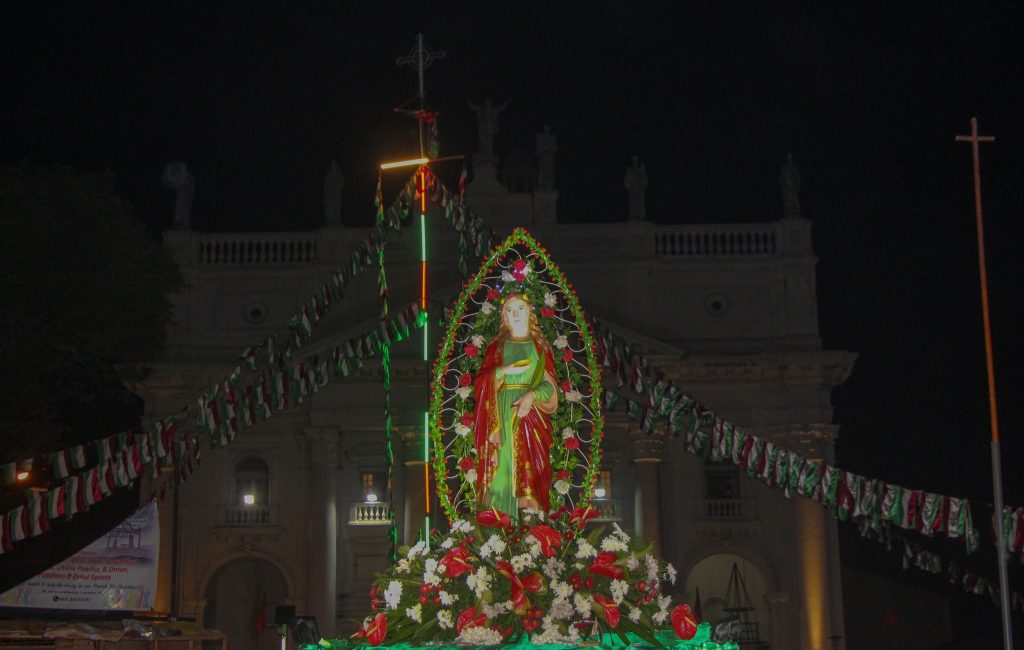
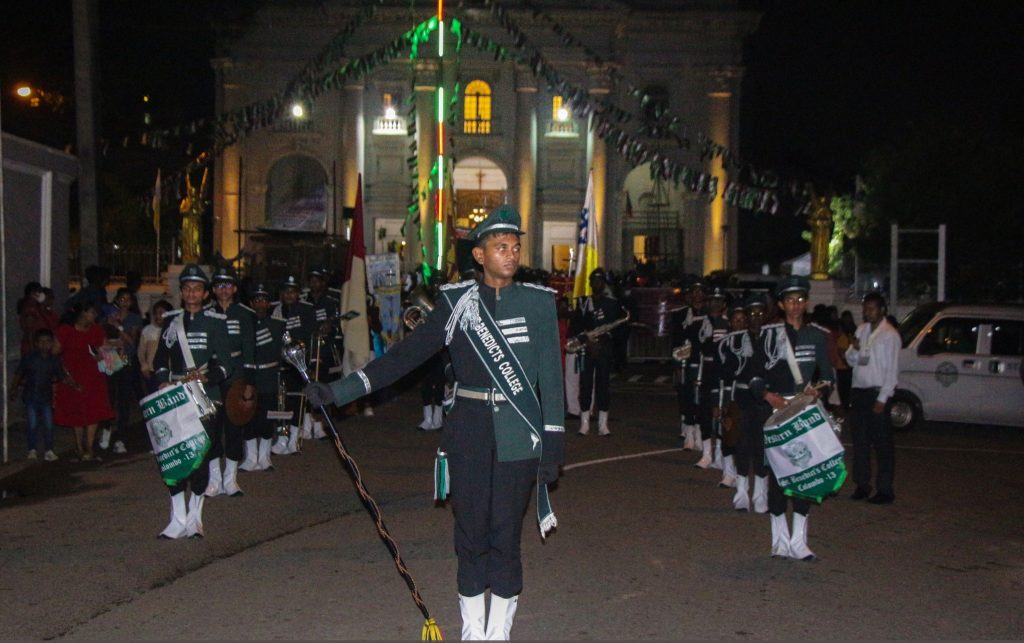
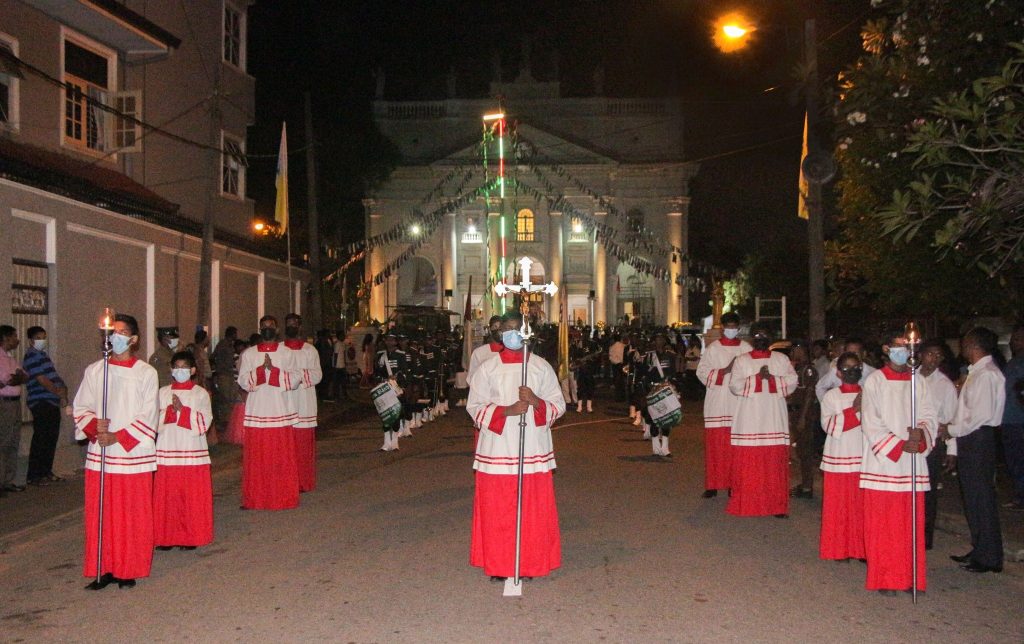
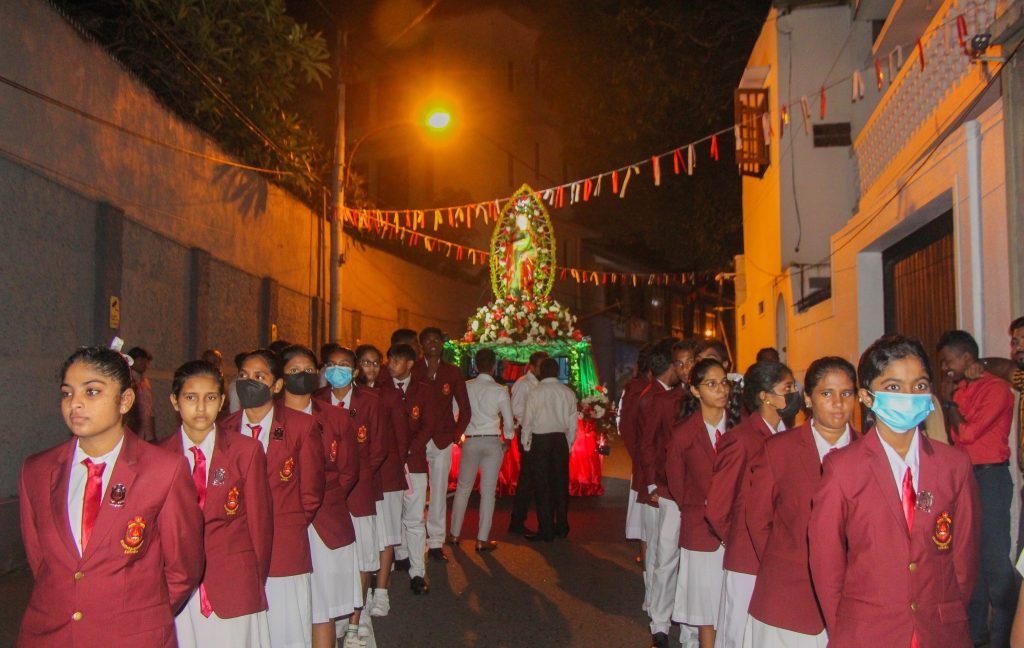
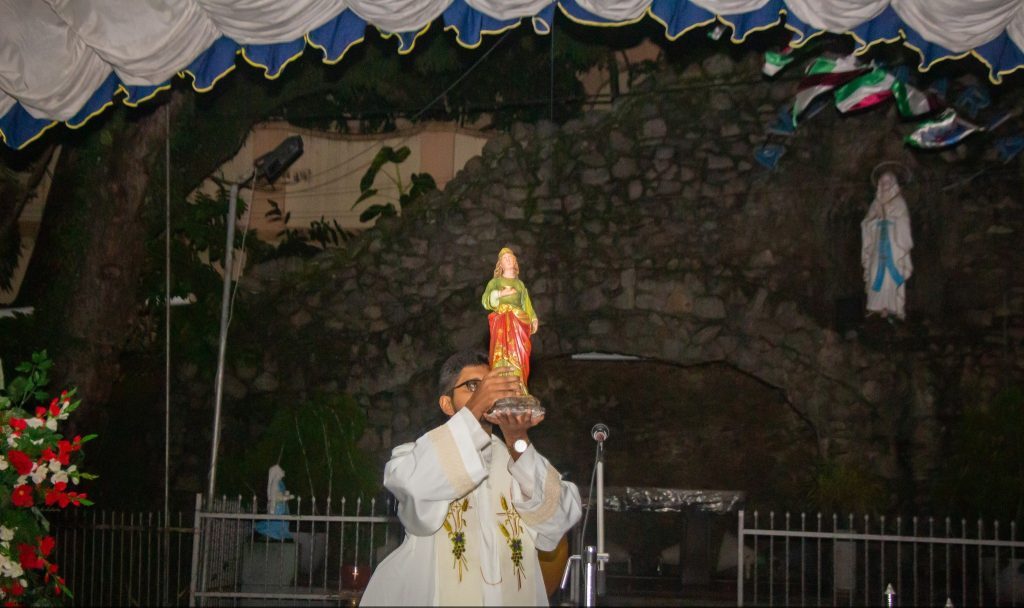
How to reach St. Lucia’s Cathedral?
The cathedral is located at Kotahena, in the north east of Colombo, on 18,240 sq. ft. of land.
Important Information
- Address: St. Lucia’s Cathedral, St Lucia’s St, Colombo 13, Sri Lanka.
- Timing: 05:00 am–08:00 pm
- Best time to visit St. Lucia’s Cathedral (preferred time): 2:00 pm–05:00 pm
- Time required to visit St. Lucia’s Cathedral: 00:30 min
- Entry: Free
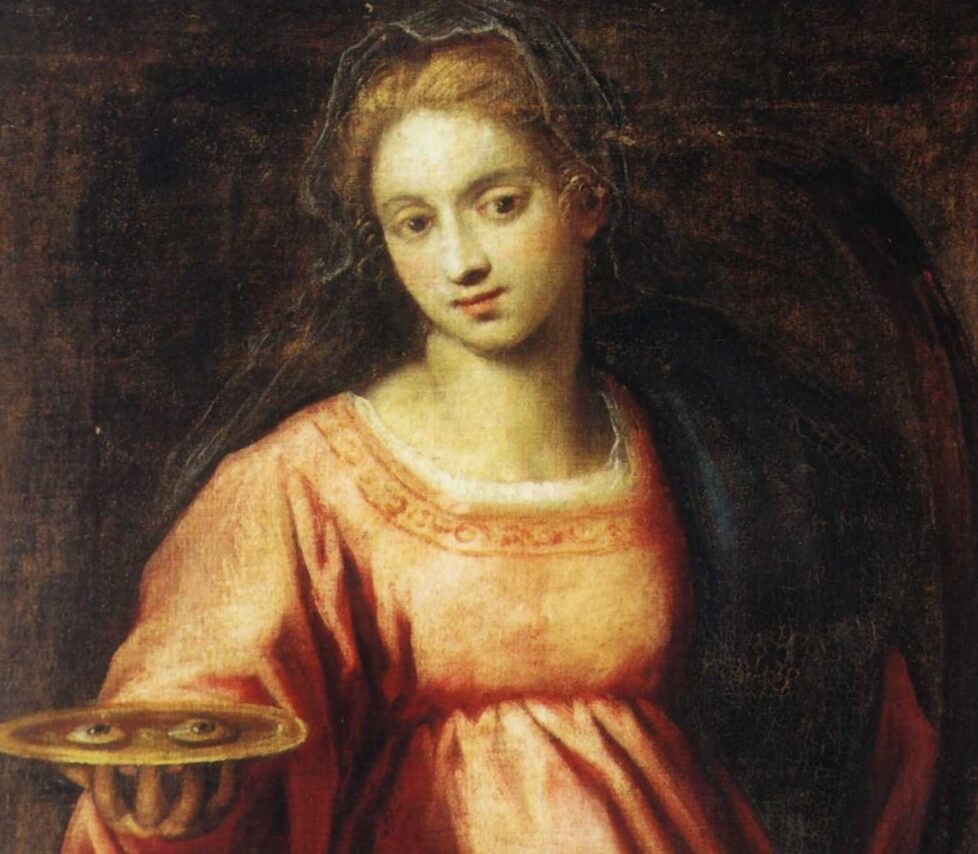

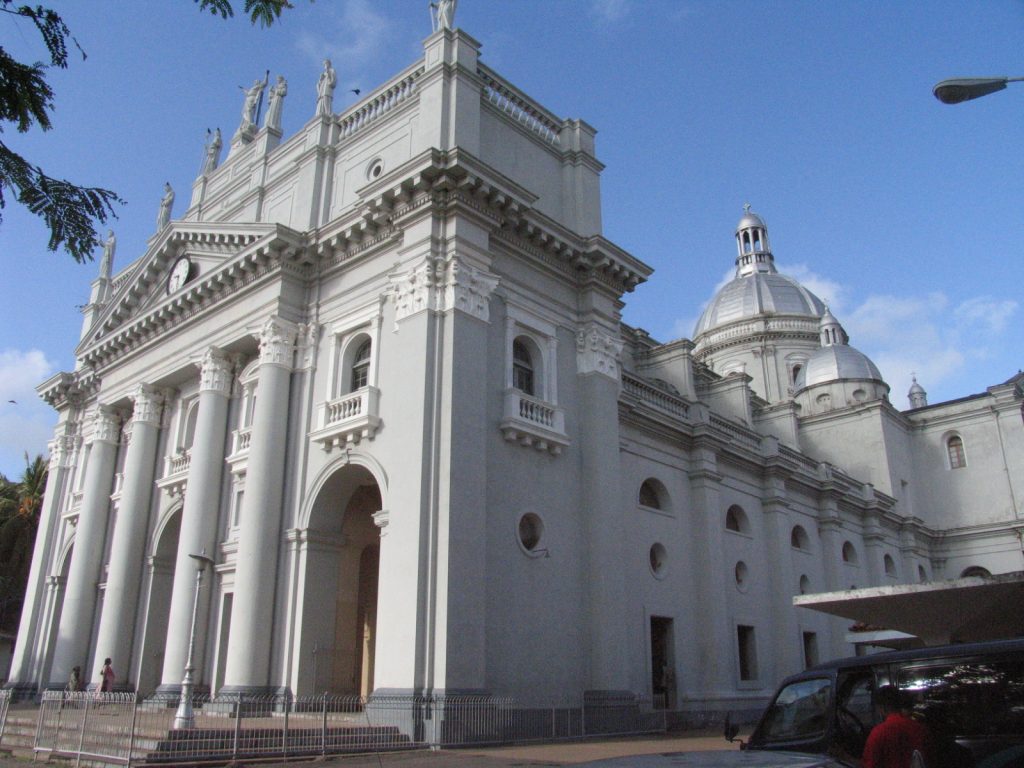
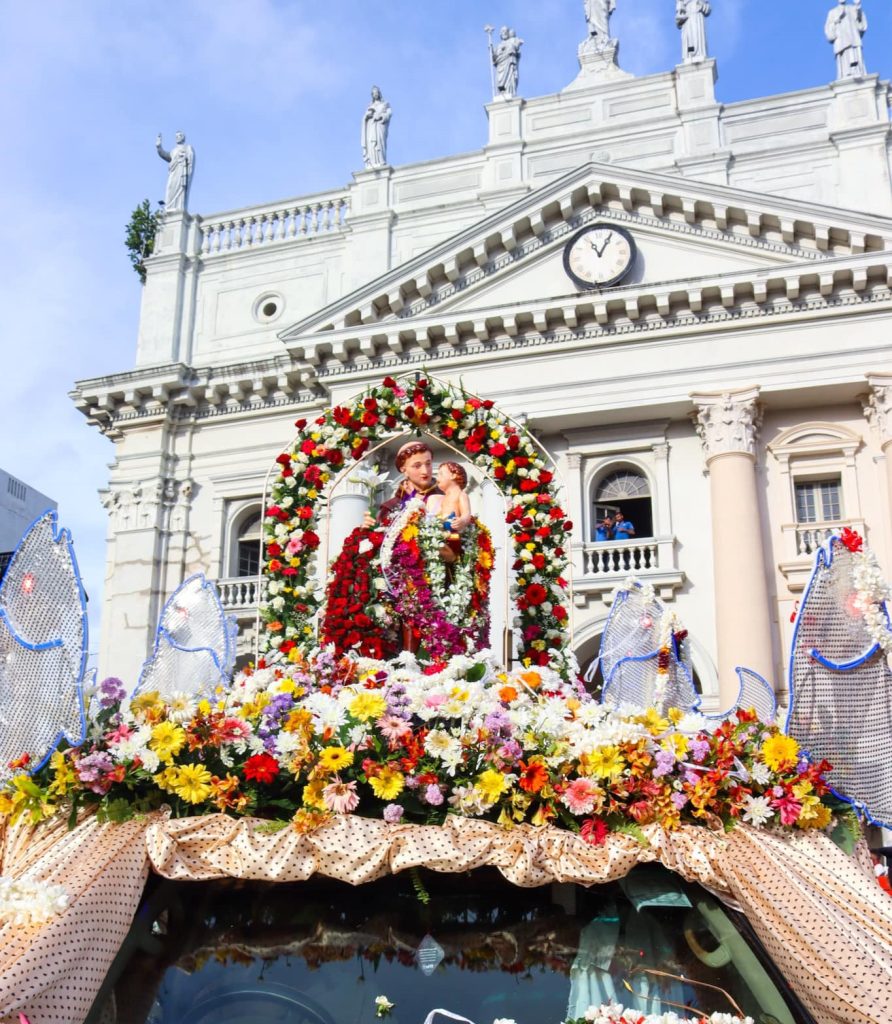
Reference(s): Sunday Observer | Daily News | Wikipedia
Affiliate Disclosure: As an Amazon Associate, I earn from qualifying purchases. This blog post may contain other affiliate links as well by which I earn commissions at no extra cost to you.

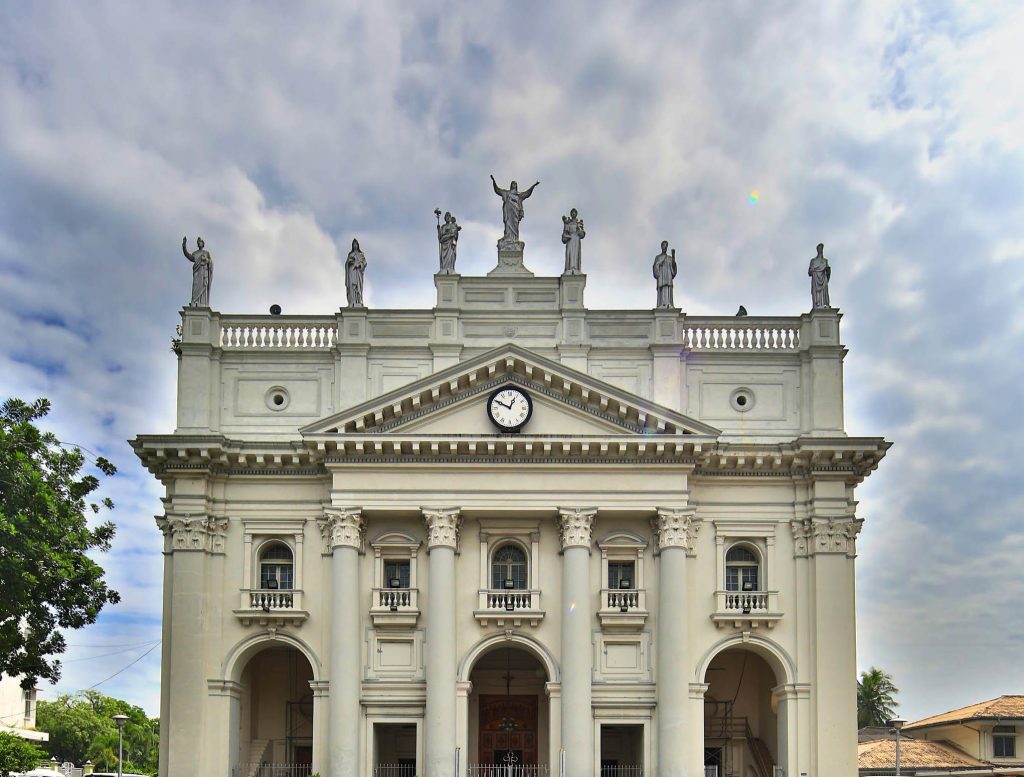
Thank you, I have just been looking for information about this topic for a long time and yours is the greatest I have found out so far. However, what in regards to the bottom line? Are you certain about the source?